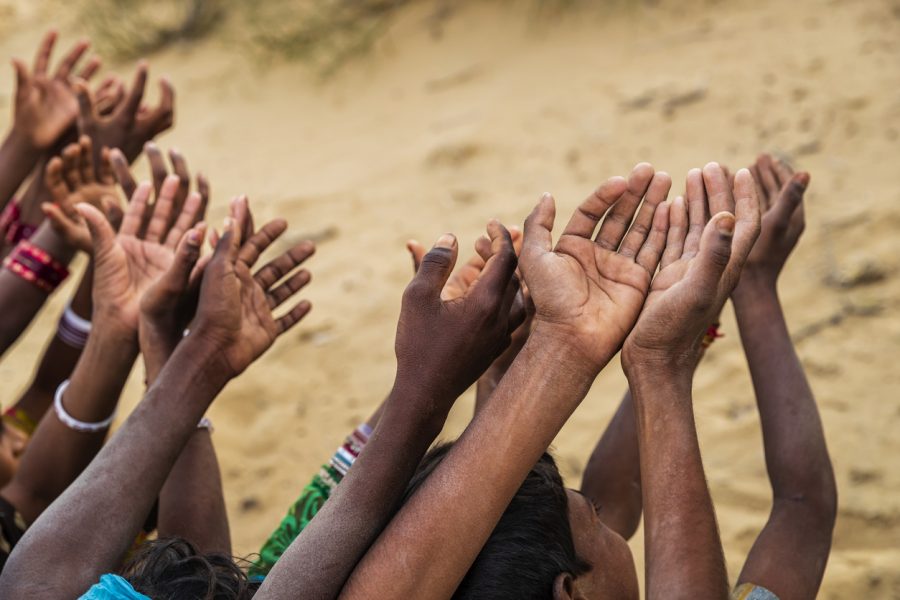
- Home
- India
- World
- Premium
- THE FEDERAL SPECIAL
- Analysis
- States
- Perspective
- Videos
- Sports
- Education
- Entertainment
- Elections
- Features
- Health
- Business
- Series
- In memoriam: Sheikh Mujibur Rahman
- Bishnoi's Men
- NEET TANGLE
- Economy Series
- Earth Day
- Kashmir’s Frozen Turbulence
- India@75
- The legend of Ramjanmabhoomi
- Liberalisation@30
- How to tame a dragon
- Celebrating biodiversity
- Farm Matters
- 50 days of solitude
- Bringing Migrants Home
- Budget 2020
- Jharkhand Votes
- The Federal Investigates
- The Federal Impact
- Vanishing Sand
- Gandhi @ 150
- Andhra Today
- Field report
- Operation Gulmarg
- Pandemic @1 Mn in India
- The Federal Year-End
- The Zero Year
- Science
- Brand studio
- Newsletter
- Elections 2024
- Events
- Home
- IndiaIndia
- World
- Analysis
- StatesStates
- PerspectivePerspective
- VideosVideos
- Sports
- Education
- Entertainment
- ElectionsElections
- Features
- Health
- BusinessBusiness
- Premium
- Loading...
Premium - Events

What India needs is a radical agenda to eradicate caste, not timid tinkering with caste oppression
Recognising the hierarchy of social and economic power that exists and operates among and within the scheduled castes and tribes, the Supreme Court has allowed state governments to create sub-quotas for the relatively more deprived sections within the quotas for scheduled castes and tribes. This bit of tinkering could expand access to the benefit of reservations for some of the most backward communities of India, but will not bring about any radical improvement.
Radical improvement in the status of Dalits and tribal people depends not so much on quotas as on direct measures to improve their cultural capital and economic conditions, embedded in an agenda of political empowerment, caste eradication, and religious reform. In the absence of any conscious effort to formulate and implement such an agenda, quotas serve the purpose of maintaining the status-quo, albeit with the illusion of constructive action that serves to legitimise the system as it exists.
If this sounds needlessly cynical and pessimistic, just consider the reality, after seven decades and more of implementing quotas, of Dalit girls being raped and murdered with relative impunity across the land, and, in the recent past, a tribal youth being beaten to death in relatively enlightened Kerala, and a BJP worker in Madhya Pradesh urinating on the head of a tribal man, apparently for no reason other than to assert the difference in social power between the two individuals.
Tokens of empowerment
Political mobilisation on the basis of caste identities serves to reinforce caste consolidation, rather than to dilute the hold of caste on society. The demand for quotas for communities that have not been considered to constitute socially and economically backward classes, and election promises to create such quotas, reinforce caste. Selecting candidates for political office from backward castes and anointing some those who get elected as ministers feed the illusion of a share in political power for the deprived communities, from whom these tokens of empowerment are drawn.
Prime Minister Modi had washed the feet of some Dalits from the Valmiki community, in connection with rituals for the Ram Mandir at Ayodhya, reminding society at large of the links Valmikis are supposed to have had with Lord Ram. The legend is that Ratnakara, a penitent robber, had gone into prolonged meditation deep enough to allow an anthill (valmikam, in Sanskrit) to grow and envelop him, and when he emerged from it, enlightened and suffused with devotion towards Rama, he was called sage Valmiki. Valmiki wrote the Ramayana, and also was a character in the tale (Ramayana literally means Rama’s story), sheltering Sita, after she had been abandoned in the forest, pregnant with twin sons and desolate that her husband had deemed her welfare less important than being a blameless king, who would not tolerate a wife who had lived 11 months and more in another man’s home, even if as a captive.
Symbolic obeisance
Such symbolic obeisance by the highest of the land to a handful of Valmikis did not prevent the brutal rape, months later, of a Valmiki girl in Hathras, her brutalisation by the rapists, and her subsequent cremation by the police in the dead of the night. The Hathras horror testifies to the limits of symbolic empowerment.
True, quotas are a little more than symbolic empowerment, but not by much. Of India’s 141 crore population, members of Scheduled Castes and Scheduled Tribes account, respectively, for 16.6% and 8.6% of the population, totalling a little more than a quarter of the population, that is, more than 35 crore (quotas are 15% for scheduled caste members and 7.5% for scheduled tribe members). Quotas in government jobs benefit a tiny proportion of Dalits and tribal people. Even of the relatively dominant Dalit castes that others complain of having cornered quota benefits, only a small minority could have benefitted from the quota. Those who have taken advantage of quotas tend to develop the economic and cultural capital that help subsequent generations take advantage of the quota far better than those who have not been able to access the quota. Sub-quotas do not address this problem.
Quotas in admissions to educational institutions could potentially benefit many more, but the poor quality of education that most of the non-elite receive in their early school years inhibits actual benefit from prized admissions to institutions of academic excellence for a large proportion of those who are admitted via quota.
Quotas, another design of affirmative action
Organise, educate, agitate — this was Ambedkar’s advice to the Dalits. Quotas, in the absence of political empowerment, lead, at best, to a few cases of individual emancipation from oppressive deprivation. Quotas are just one particular design of affirmative action, one that suffers from two major defects: quotas lack any incentive to excel, and quotas reinforce, rather than weaken, the perception of inferiority of the beneficiary communities. In the absence of consensus on a better design for affirmative action, we are better off with quotas than without quotas.
Those who seek emancipation of the subaltern, and those who seek India’s economic rise in an increasingly knowledge-intensive global economy, have a two-fold common agenda: political empowerment of the deprived, so that they become active agents of their own development at the levels of the individual and the community, and broad-based accesses to nutrition, sanitation, clean drinking water, quality education, and healthcare. This is the only way to convert every member of India’s giant working-age population into two hands that produce, from being just a mouth to feed.
Urbanisation and a proliferation of jobs that break the traditional correlation between caste and occupation are vital. So is religious reform, to rid the Hindu faith of the ideology of caste. Is that even feasible? The reality is that at the level of the religion’s core philosophy, the assertion of the non-duality of nature and the spirit, of the creator and the creation, leaves no room for dividing humanity into castes or privileging any path to spiritual realisation over any other. Hindu religious practice in accordance with its core vedantic philosophy can remove the hierarchy of caste and engender equal acceptance of the followers of all gods or of no god.
Of course, such thorough-going reform is an ambitious goal. It is far simpler to quibble over quotas.
(The Federal seeks to present views and opinions from all sides of the spectrum. The information, ideas or opinions in the articles are of the author and do not necessarily reflect the views of The Federal.)


